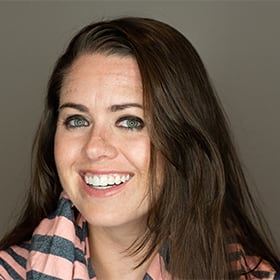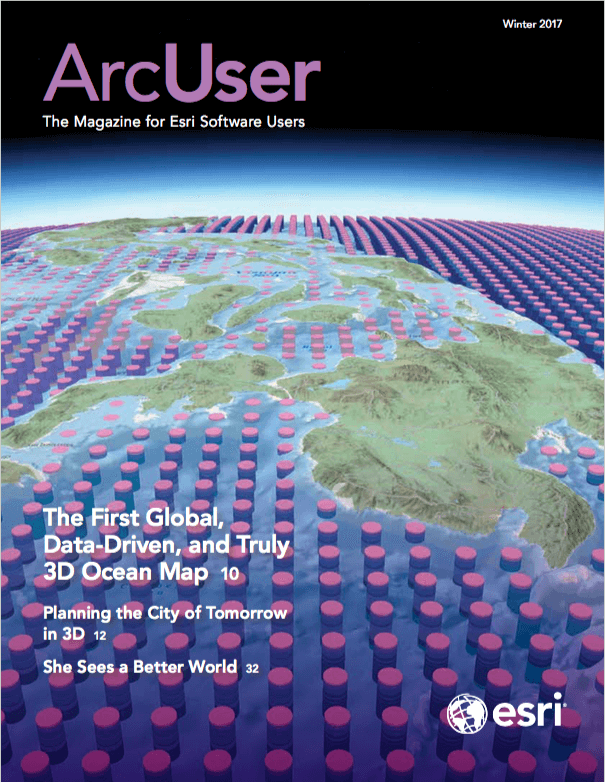Madison Vorva, who goes by Madi, has accomplished a lot.
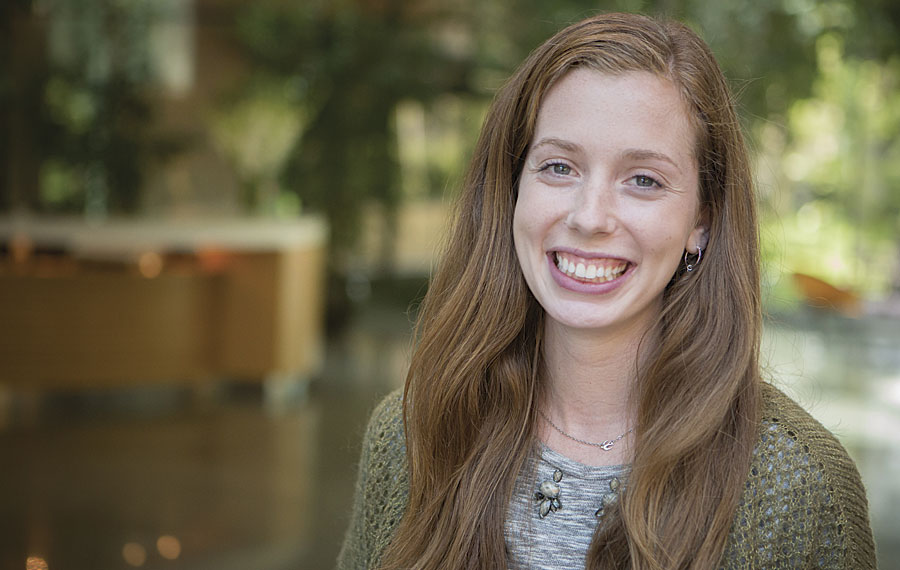
She campaigned to get the Girl Scouts to stop using unsustainable palm oil in their cookies. She convinced Kellogg’s, leading producer of cereal, cookies, crackers, and savory snacks, to agree to a deforestation-free policy for all its products.
She has studied land rights in Colombia, traveled to Cambodia to make a short documentary on a politician fighting for victims of land grabs, and observed how palm oil farming affects local communities in Malaysia and Singapore.
She is a United Nations Forest Hero and was honored at the Teen Choice Awards. She sits on the board of the Jane Goodall Institute (JGI).
She recently hosted a television program to show kids—especially girls—how fun and important science and technology are. She’s developing GIS-based curricula to get youth more involved in service learning.
She’s currently working on her thesis.
Her undergraduate senior thesis.
Madi is only 21 years old.
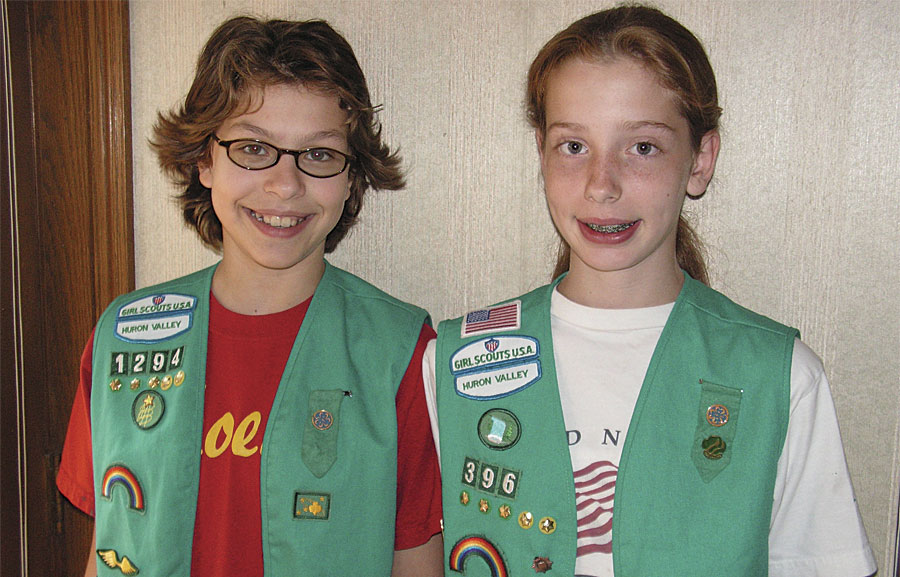
Campaigning to Make Palm Oil Sustainable
As a Girl Scout trying to earn her Bronze Award, she and her friend, Rhiannon Tomtishen, put together an awareness presentation about why orangutans are endangered.
“I was really inspired by Jane Goodall,” recalled Vorva. “I had seen an IMAX movie of her and was like, I want to be her when I grow up!”
The two friends learned that one of the biggest threats to these primates is the deforestation that is occurring to make room for palm oil plantations. Given that palm oil is in about 50 percent of packaged grocery store products, the girls felt they had to do something. They created orangutan week at their school, hosted palm oil-free bake sales, and put on a middle school dance to raise money for conservation.
Then one day, Vorva flipped over a box of Girl Scout cookies and saw that palm oil was an ingredient.
“That was really shocking because I’d sold the cookies since I was in first grade,” she said.
That year, she and Tomtishen sold magazines instead of cookies. They’d planned to boycott the baked goods until the Girl Scouts stopped using palm oil in them, and they started a petition on change.org to get others to join in. They even attended a conference for Dr. Jane Goodall’s Roots & Shoots program, which inspires kids around the world to create community action projects, to see if Goodall would sign the petition.
“But she actually changed the language on the petition,” said Vorva. “It said, like, ‘I’m not going to buy Girl Scout cookies until the palm oil is taken out,’ and she rewrote it [to say] ‘unless it’s from a sustainable plantation.'”
In addition to signing the petition (along with 70,000 other people), Goodall got Vorva thinking about sustainability and what that meant. The girls reached out to the Rainforest Action Network, Union of Concerned Scientists, and other similar organizations to partner with them on the campaign. That’s when Vorva started to realize that palm oil farming not only threatens orangutans but is also linked to the displacement of indigenous communities and child enslaved labor.
Part of the Girl Scouts’ mission is to advocate respect for the earth and encourage using resources wisely. Vorva and Tomtishen remained members of the organization throughout their campaign and worked to change it from within. They started a Rainforest Hero badge and sponsored art projects to help girls learn about the palm oil issue and its connection to deforestation. Soon, the girls were a running a nationwide campaign.
When Girl Scouts USA agreed to meet with Vorva and Tomtishen at their headquarters in New York five years later, it was big news—on the front page of the Wall Street Journal and in Time magazine as well as on ABC, NPR, and CBS. “It was all over the place my sophomore year of high school,” recalled Vorva.
Girl Scouts’ subsequent change in its palm oil policy was the first time policy change was driven by girls in the organization’s 100-year history. The Girl Scouts chose to offset its use of palm oil by purchasing certificates from the GreenPalm program.
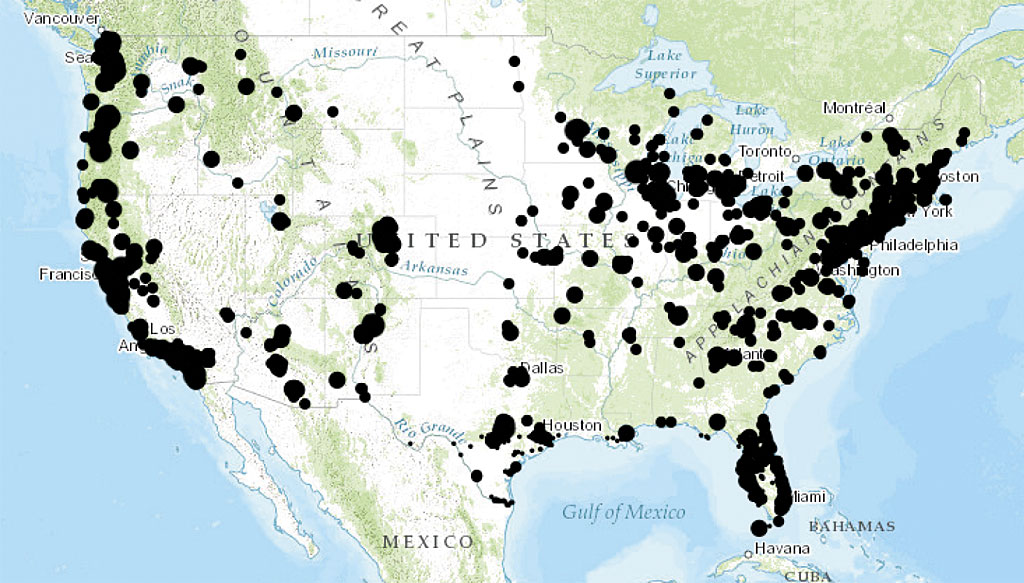
“That was really, really exciting,” said Vorva. “But it was also discouraging because they didn’t make sure their palm oil was from sustainable sources.”
So she decided to go bigger.
Kellogg’s, based in Vorva’s home state of Michigan, owns one of the two companies that bake Girl Scout cookies. So Vorva and her team—with support from hundreds of thousands of people—began communicating with Kellogg’s to persuade the company to use deforestation-free palm oil. Not only did Kellogg’s comply by announcing in 2014 that it would implement a deforestation-free policy for all its products, but Wilmar International, which trades 45 percent of the world’s palm oil, also agreed to adopt a deforestation-free landmark policy.
“Now, 90 percent of the world’s supply is bound under these deforestation-free commitments,” said Vorva. And most American companies currently have a sustainable palm oil policy of some kind in place.
“Then I went to college!” Vorva exclaimed, throwing this timeline into sharp relief.
That Lightbulb Moment
College is where David DiBiase, Esri’s director of education, global business development, and Vorva met. They were both attending a talk about GIS being given by Esri founder and president Jack Dangermond at Claremont Graduate University in Southern California.
Vorva was a student at nearby Pomona College. GIS had piqued her interest when she was in the JGI’s Roots & Shoots program. JGI uses maps and geodesign to work with surrounding communities to rehabilitate forestland and protect chimpanzee habitats.
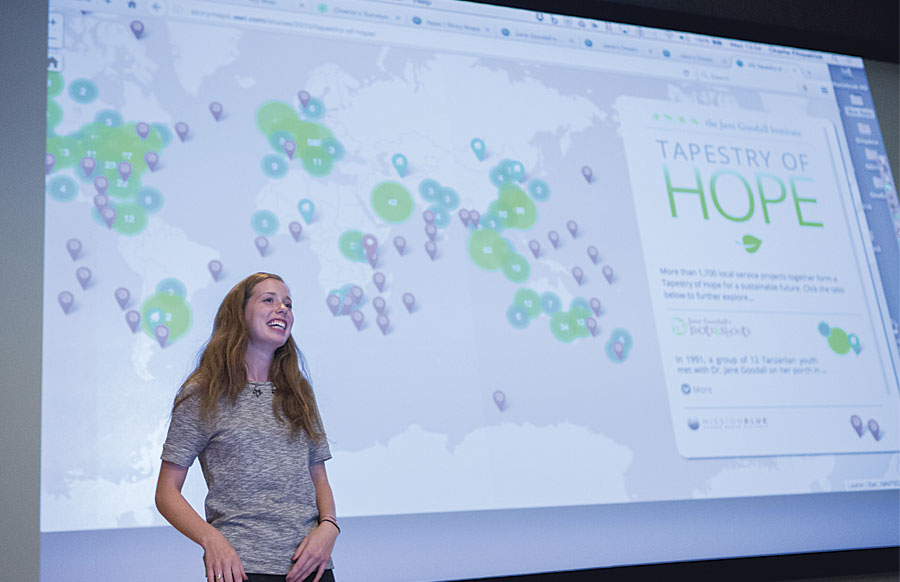
“The community mapping model for Roots & Shoots is for kids to make observations wherever they are and start figuring out, ‘What are the real needs in my community for people, animals, and the environment,’ and ‘What are the real resources [that] could help me with the problem I’m trying to solve?'” said Vorva.
Her lightbulb moment had come during an introduction to a GIS course she took in college. She geocoded the petition signatures from her original campaign with the Girl Scouts.
“It just, like, blew my mind to be able to say for the first time, ‘This is where everyone was from, this is the most concentrated ZIP code for petition signatures,'” she said. “I wish I had known that was out there when I was younger because you can visualize your impact so much easier. One of my biggest challenges the whole time driving an awareness campaign was [answering the question], ‘How are you reaching people?’ And if we had had a map of social media when the topic was trending, that would have been a great tool to show, like, this is producing real results.”
When Dangermond began talking about Esri’s ConnectED initiative, which donates ArcGIS Online subscriptions to schools across the United States, Vorva thought, “This is so cool. We didn’t have anything like this!”
Dangermond identified DiBiase as the person responsible for making the massive project possible, so Vorva decided to make his acquaintance before jetting off to a meeting.
“I wrote [DiBiase] this letter and passed it down to him in the audience, sort of introducing myself and why I was really passionate about this community mapping, service-learning module,” she said. A few weeks later, DiBiase called Vorva, telling her that he hadn’t received a note in class since he was in grade school. But he was obviously impressed.
“Imagine meeting Jane Goodall as a 20-year-old woman,” he reflected. “Imagine the idealism. Imagine the determination. Imagine the principles. You’d be meeting Madi if you met Jane as a 20-year-old.” DiBiase asked her to speak at the 2015 Esri Education GIS Conference, which takes place just before the Esri User Conference in San Diego, California.
In her presentation, Vorva told the audience how she came to realize the encompassing nature of conservation work—that it wasn’t just about protecting one species but that it included land-use and deforestation issues, required community engagement, and had political and economic ramifications.
“She absolutely blew the room away, she was so poised and her story was so inspiring,” remembered DiBiase. “People were in tears at the end.”
Simplifying Complexities with Maps
Vorva had realized the difficulties of implementing a plan to source sustainable palm oil because the supply chain is complex. The fruit is harvested at an oil palm plantation and sent to a mill and then to a refinery. Many plantations send fruit to one mill, and milled fruit is sent to different refineries so companies have no idea where the palm oil they purchase originally came from.
“If you don’t know where the palm oil’s coming from, how can you claim that the actual plantations are adhering to these guidelines and rules? How do we ensure that traceability component?” questioned Vorva.
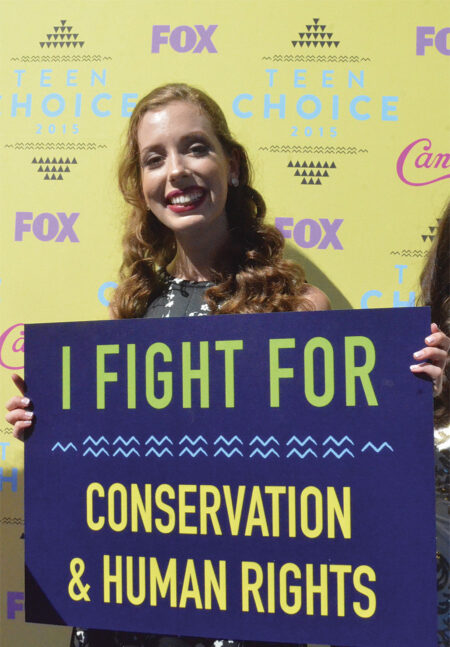
She realized that GIS could help her visualize the tangled supply chain, and she is working on that now with her partners. What Vorva perhaps didn’t realize right away, however, was how imperative maps were to digging deeper into the genesis of the issue she’d been involved in for nearly a decade.
“My initial passion was conservation,” she said. “And then I realized that conservation is a very people-driven thing.” She saw this when she traveled to Colombia as a sophomore in high school to observe a community that was coming back to its land after being driven out to make room for what ended up being a failed palm grove.
She saw it in 2014 when she went to Cambodia to make a short documentary about Mu Sochua, a democratic opposition leader who helps indigenous communities fight for land rights. She saw it when she went to Malaysia and Singapore last year to find out why palm oil is so prevalent in that part of the world and how its production affects politics, economics, and public health.
“When we were in Malaysia, these people didn’t have maps, and they were going to court to fight for their land rights,” she recalled. Some nonprofits were trying to use community maps to show the tribes’ historic and traditional boundaries, but Vorva noticed that some of the basemaps being used were taken from old colonial maps.
“That’s why I’ve gone back to mapping,” said Vorva. “The people who should be able to decide what happens to their community resources are people who are from those places. And oftentimes, they don’t have [formal] land rights and they’re using maps that are completely outdated—or they don’t know how to use them.” That’s why she thinks conservation groups should focus on community-centered mapping when helping people fight for their land.
Spreading GIS to the Next Generation
Vorva also thinks that community-based mapping can help kids get more involved with service-learning projects.
“A map and GIS can help you visualize the world,” she said.
She remembers being young and working on a project that felt so immense. “It was a lot of responsibility and also just hard,” she said. “I would be on the ground in Colombia and it was an intense position to be in to have to see these really gross human right abuses. […] And then having to represent that and explain in a two-minute NPR interview why the average American consumer buying Girl Scout cookies should care. It was a lot of responsibility for a kid.” She knows how young activists feel.
“These problems are really big, and kids can be overwhelmed,” she reflected. “Being able to map your project and see that you’re part of a much larger movement—that’s why I got excited about [GIS].”
And that is why she’s trying to make young people more aware of the technology. Part of her role as a board member for JGI is to increase GIS use within the Roots & Shoots platform.
“I get to Skype into classrooms frequently and introduce the community mapping model,” she said. “I’ve gotten to mentor a lot of kids.” Which is important to her, considering she’s had so many mentors throughout the years. “I get to do that now through Roots & Shoots—inspire other kids and…connect them to different groups,” she said. “That’s the best part.”
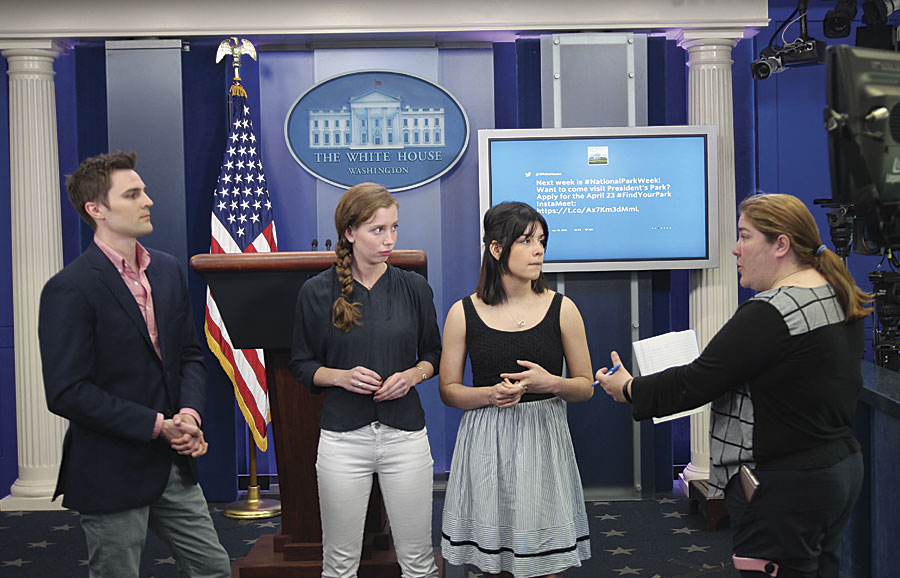
She also did this as a host of FabLab, a 2016 television show on FOX that aimed to motivate girls to take more of an interest in science, technology, engineering, and math (STEM). Through the show, she attended the 2015 United Nations (UN) Climate Change Conference (COP21) in Paris and shot videos explaining to kids what the UN does. She also filmed at the 2016 White House Science Fair, highlighting the top young scientific talent in the country.
“The show allowed me to kind of combine my how-do-we-make-the-world-a-better-place [mindset] and my interest in tech,” she said. “I was always talking about how we should talk about maps.”
Vorva believes so wholeheartedly in the power of maps that her senior thesis seeks to expand the use of GIS among young people. “It’s a GIS lesson for high school students,” she said. “I’m creating, like, a case study of what the Jane Goodall Institute has done with geodesign.”
She’s putting together introductory lessons on monarch butterflies to help kids understand why the species is threatened. She wants them to see how land-use changes have decimated their habitats. Then she wants the kids to use GIS to figure out the best places to plant milkweed (the only plant these caterpillars and butterflies use for food and shelter) in their communities to contribute to the national corridor being established.
“What she’s doing is really sophisticated,” said Char Miller, director of the environmental analysis program at Pomona College and Vorva’s thesis adviser. “It’s not just about the tool [GIS]. It’s also [about] how you show those cool things to young people and engage them.”
“She’s totally plugged into…youth leadership and conservation, so having that—plus an idea of how to use GIS to solve problems—that’s tremendous,” said Rob Stauder, product manager for GeoPlanner for ArcGIS at Esri, who helped Vorva work on her thesis project during her internship at Esri over the summer.
“She recognizes GIS as an instrument or a modality that can help people change their views of the world,” echoed DiBiase. “She believes that the ability to use GIS—and geodesign in particular—has the potential to make a lifelong impact on the students who work with it.”
Mapping Change
GIS has certainly affected Vorva. And although she’s not entirely sure what she will do after she graduates in May 2017, GIS will almost certainly play a role in her future endeavors.
“No matter what, I’m going to keep working on these kinds of projects,” she said. “I feel just as driven to do something as when I was 11.” Vorva also wants to continue inspiring kids to pursue their own passions and use GIS to perceive their effectiveness.
“I want younger people to have those lightbulb moments, like, ‘Oh, I can apply GIS for x, y, or z’—just like I did,” she said. “That’s what excites me…to show them that [GIS] is a way to visualize what they’re doing.”
